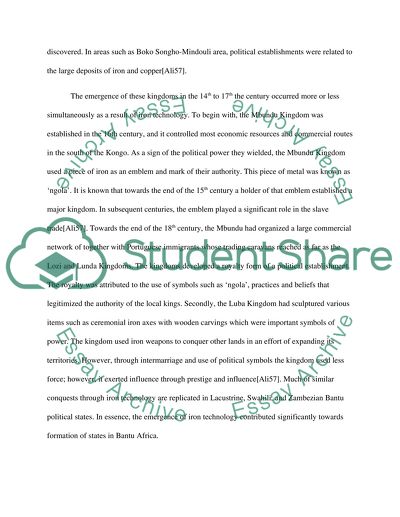Retrieved from https://studentshare.org/miscellaneous/1677241-discuss-the-contributions-of-iron-technology-to-the-process-of-state-formation-in-bantu-africa
https://studentshare.org/miscellaneous/1677241-discuss-the-contributions-of-iron-technology-to-the-process-of-state-formation-in-bantu-africa.


